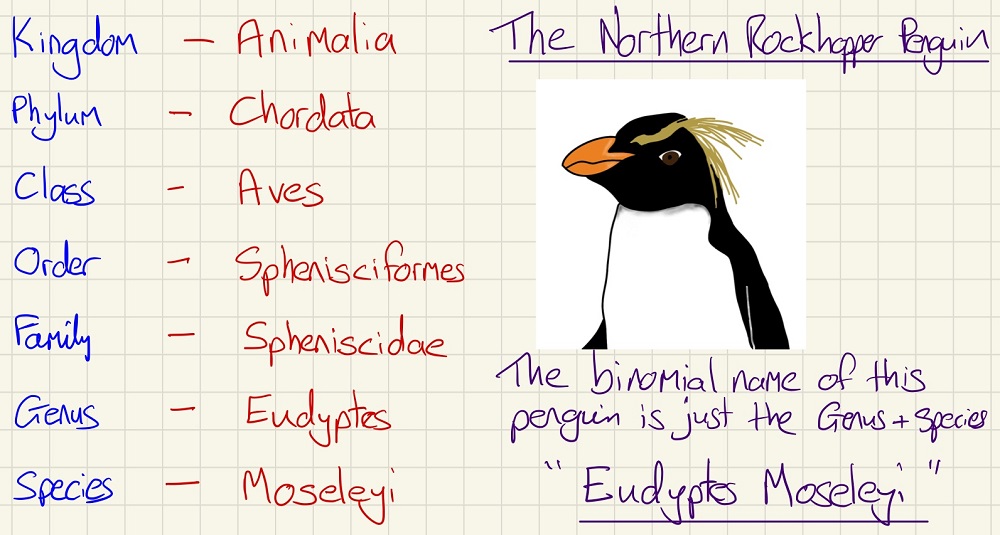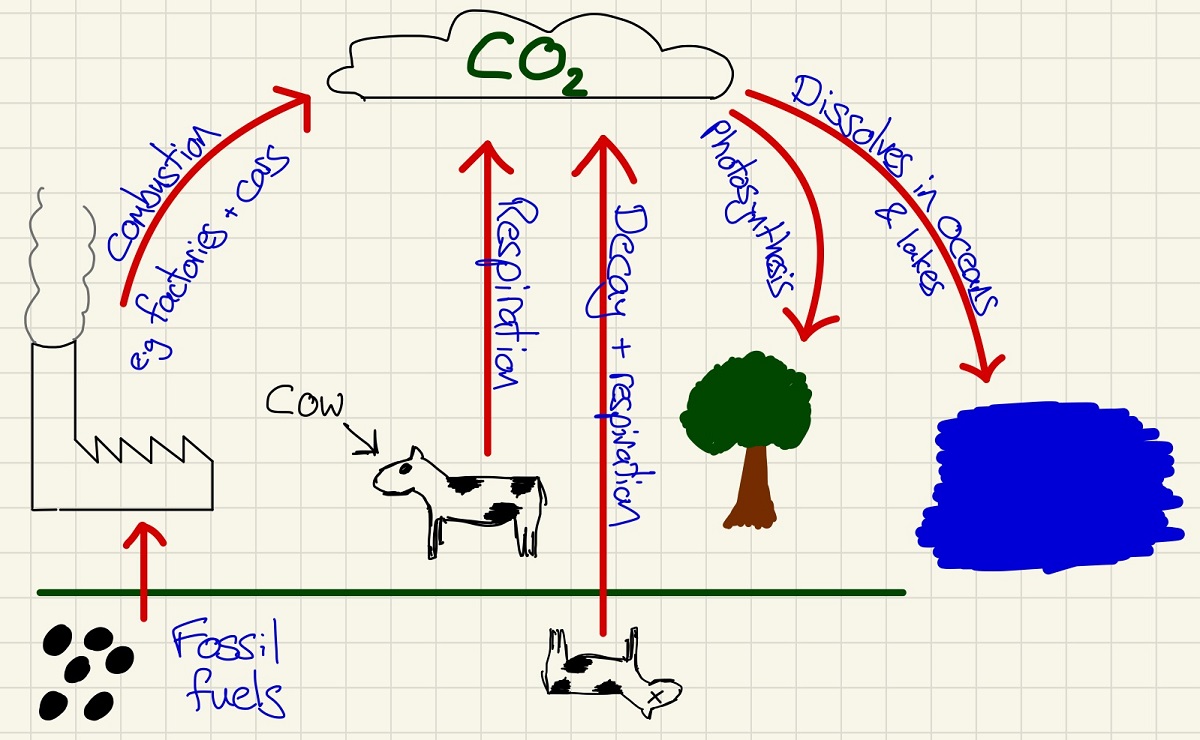Ecology
What we are learning: (component knowledge)

Classification of organisms:
How do we give organisms a name so that we know what we are talking about no matter which continent we are working on? Carl Linnaeus developed the binomial (two names) system and we still use it today. When we have all of the information about an organism, we name it based on its Genus + Species. The full classification runs through:
• Kingdom:
• Phylum:
• Class:
• Order:
• Family:
• Genus:
• Species:
Carl Wose, using better microscopes and biochemical analysis has split all living organisms into 3 kingdoms. These are:
• Archaea: primitive bacteria.
• Bacteria: true bacteria.
• Eukaryota: protists, fungi, plants and animals.

Competition and communities:
All organisms need supplies. These can be food, shelter, nutrients, water, sunlight and others. In order to reproduce, some need other organisms (of the same species for sexual reproduction). One species will depend on others for food, pollination or the transportation of their seeds through fruit and other forms of seed dispersal.
In most cases, these interdependencies link to food. Plants complete for sunlight and produce the starting point for all food chains and food webs. As well as food, animals compete for water, space, shelter and mates.

Biotic & Abiotic factors:
When measuring effects on the environment, there are two different types of measures/indicators:
• Abiotic factors: These are non-living things such as wind speed and direction, CO2 levels in the air, O2 levels in rivers, lakes and the sea, soil pH, temperature, light intensity, moisture levels. These can all affect a community and its population.
• Biotic factors: These are the living factors such as the amount of available food, competition from other species, new diseases being introduced and, as mentioned before, the amount of available food. These can change the population of a species in a community.

Distribution of organisms and sampling:
This is an excellent data exercise. You may be asked to work out the number of daisies in a field. It would be too time consuming to count them all and by the time you have catalogued the last one in the furthest corner, one may have died and two more sprouted up. We take random samples by throwing a quadrat randomly around the field (not up trees please) and count how many are in each quadrat. Then multiply the mean number by how many quadrats it would take to fill the field.
You need to be able to calculate the area of a field in m2 and the area of the quadrat. You can then divide the area of the field by the area of the quadrat to find out the factor to multiply the mean by. You should also be able to work out the mean, median and mode in data.
There is also a required practical for this and you will also learn how to record a transect.

Adaptations:
Organisms are different in different environments and it is clear that they are suited to those conditions. Animals and plants have adapted in terms of their behavioural, structural and functional adaptations, these will help them to survive, thrive and reproduce in that habitat. The most common examples are:
• Layers of fat to keep warm,
• Fur - long and thick in the cold,
• Teeth or beaks specially shaped for the available diet,
• Oils to prevent cold water from getting to the skin,
• Defenses like a hedgehog's quills,
• Behaviours like hibernation in winter.
Make sure that you can describe and explain the adaptations of the Penguin, shark, camel, rabbit. This will help you to spot the adaptations on a surprise animal and you will then be able to apply this.
An extremophile is an organism that thrives in environments that would kill off anything else. Examples include organisms that live in total darkness, that can survive very high temperatures and/or pressures in hydrothermal vents and even very sulfur rich or salt rich environments.

Levels of organisation - food webs & chains:
The producers (plants that photosynthesise) are then eaten by animals that are herbivores, these animals are primary consumers. This energy in food (chemical energy) is passed from the sun to the plant then from animal to animal. Animals that eat other animals are called predators and those animals that are eaten are called prey.
In a food chain or food web, when one species has a reduction in population, this will cause the layer above to also reduce in numbers as their food supply falls. Those that feed the consumer that has a population fall will increase in numbers as fewer animals are eating them. This relationship will have further impact on populations both above and below in the food chains/webs.

Recycling of essential building blocks:
The carbon-based building blocks first enter the food chain from the producers, These plants are the only organisms that can use sunlight to make plant material. These building blocks are passed onto the primary consumer and are absorbed into their body. This primary consumer is also "prey" to a "predator" and when eaten, building blocks are absorbed into the predator.
Finally, when the final animal dies, the remains decay. Decay involves detritivores, they break down these building blocks into nutrients and the carbon content is released as CO2 into the atmosphere. This begins the Carbon Cycle as shown in the diagram. Water is also recycled, transpiration from plants and evaporation form the sea send water into the atmosphere and it is returned to land through precipitation (rain).

Biodiversity:
Biodiversity is all about the number of species in an ecosystem. The more biodiversity that there is in an ecosystem, the more stability that there will be in that system. Our future may well depend upon us saving the vast biodiversity on Earth. We have had a huge impact and it is mainly negative. When we cut down forests, flatten land to build villages, towns and cities,we kill off countless organisms. Sometimes we wipe out species to the brink of extinction and we have even tipped some over the brink and we will never get them back. Some might not seem important, but they are. I would like to share the plight of the humble bumble bee. If we keep on using pesticides that are killing them, we will struggle to cultivate plants for food and this is clearly out fault and not respecting the need for biodiversity.

Waste management:
Our ever-growing population not only means our ever-growing need for food and resources, it means that we have an ever-growing pile of rubbish to get rid of. This waste can cause pollution that affects plants, animals and the entire planet. Toxic substances can have even more of an impact. Sulfur oxides produce acid rain which can prevent some seeds from germinating, stunt tree grown and lower the pH of lakes which kill fish.

Land use:
Humans are building more and more places for the ever-growing population to live. Often, this means cutting down forests or deforestation. During this process, organisms are killed off, habitats are destroyed, a reduction of biodiversity and the effect on the carbon cycle is frightening. The trees that have been cut down will decay and add CO2 to the atmosphere (a greenhouse gas) and those trees will never again photosynthesise. This means that the planet's ability to remove CO2 from the atmosphere has been reduced which will contribute to global warming.

Global warming:
Global warming is the increase in Earth's average temperature. This is caused by an increase in atmospheric CO
Key words/terms for this topic
Abiotic Factors Adaptation Biodiversity Biomass Biotic Factors Carbon Cycle Carnivore Communities Competition Consumer Cycling of Materials Decomposer Deforestation Detritus Ecosystem Evaporation Extremophile Fertiliser Food chain Food web Global Warming Habitat Herbivore Interaction Interdependence Interspecific competition Intraspecific competition Migration Peat bog Pollution Precipitation Predator Prey Producer Quadrat Recycling Resources Transect Trophic level Water cycle
Quick Quiz:
What you need to know
Build on the ideas of food chains and food webs, describe how each level is dependent on the previous one. Be able to describe how the population of one species affects those above and below in a food web. Describe how certain animals have adapted to their environment, remember obvious ones like penguins and camels but examiners are likely to select an obscure one, do not panic, the principle is the same. Do not forget extremophiles.

Describe the influences in a habitat, biotic (living) and abiotic (not living ) factors. The community within an ecosystem depends on the resources such as ions in soil and photosynthesising organisms, this is interdependence. Animals compete for space, food and mates. Plants compete similarly but use seed dispersal as well. You need to be able to interpret data on populations and how they are affected.

Abiotic factors:

• The amount of light,

• Soil pH,

• Availability of water,

• Temperature,

• Wind direction and speed,

• CO2 levels (plants),

• O2 levels in water (fish).

Biotic factors:

• How much food is available,

• Predators,

• Pathogens,

• A species driven to extinction as not enough to mate.

From both biotic and abiotic, you need to be able to interpret graphs and data.

Photosynthesising organisms are producers, they use the energy from the sun to make biomass. Producers are eaten by primary consumers, then secondary and tertiary. Animals that kill and eat others are predators, those eaten are prey. They have a very well balanced population relationship. You need to be able to interpret data on these relationships.

Maths skills, as well as graphs, make sure you can calculate the mean, median and mode. If you have an anomalous number, do not include it in the mean.

Required practical 7: Measure the population size of a species in a habitat and use a variety of sampling techniques. Outside with the quadrats counting daisies and collecting bugs (humanely and releasing them straight after).

Water and carbon are essential to these systems so ensure that you understand the carbon cycle and the water cycle. Look at the crucial role played by detritivores in the carbon cycle where CO2 is released into the atmosphere and minerals are left in the soil to be absorbed by new producers.

Ecosystems are more stable if there is a high biodiversity, this is a large number of different species. We are reducing this in nature with our activities but it is essential that we stop.

It is vital for the environment that any waste that we produce is returned safely, chemicals removed from wastewater, nothing toxic in landfill waste and no gases released into the atmosphere. These examples of pollution kill plants, animals that eat those plants and some animals directly which reduces biodiversity.

As we spread out on the world, our land use increases which takes space previously occupied by ecosystems. When we take peat from peat bogs to make compost, we destroy habitats and their plants, animals and microorganisms. The peat decays in our gardens releasing even more CO2. Likewise, deforestation to make room for cattle, farming and even growing biofuels reduced biodiversity and the burning of trees increases atmospheric CO2 and reduces the amount of photosynthesis.

Global warming is the slow increase in the average surface temperature of this planet and it is not a myth, This is caused by a steady increase in the levels of CO2 and methane being released. Be aware of ways that we are trying to preserve biodiversity:

• Breeding programmes to save endangered species (Chester Zoo).

• Protecting rare habitats (preventing building on these sites).

• Hedgerows where farmers only grow one crop.

• Some governments reducing deforestation and CO2 emissions.

• Increasing the amount recycled rather than using landfill.

This page was updated on: 12th April 2024
